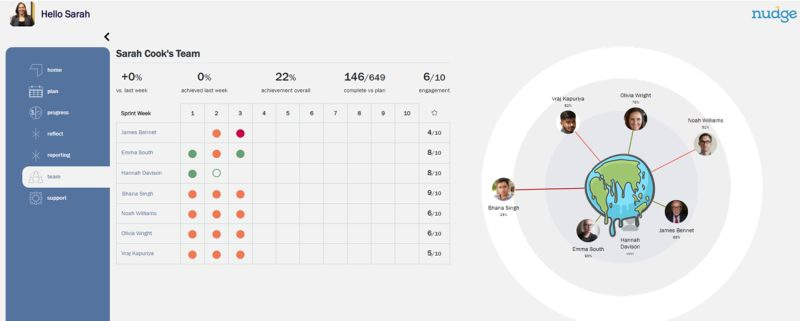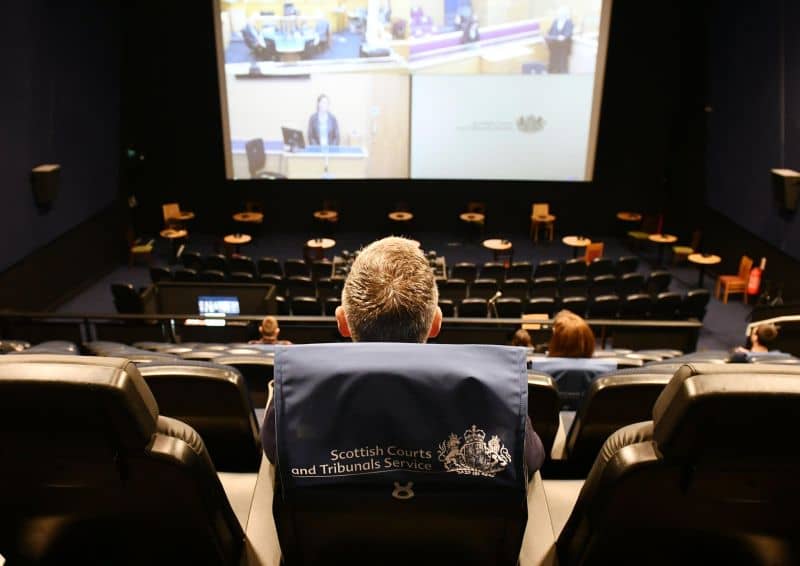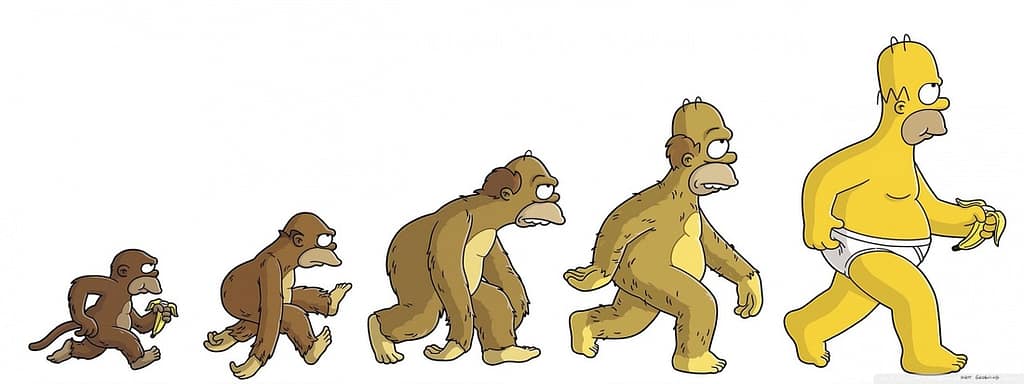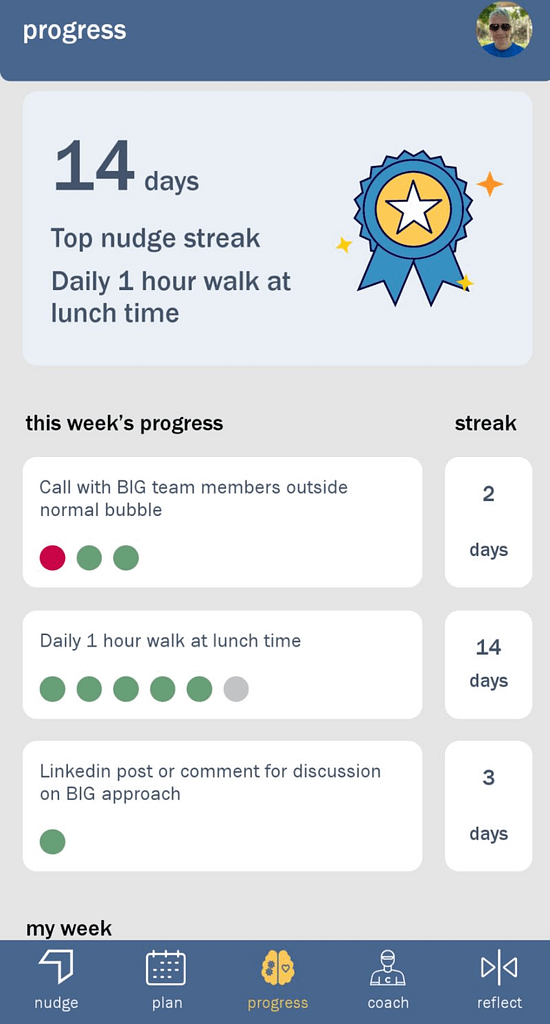The dash for dashboards – good news for HR ?
Add a few metrics vaguely to do with what HR really do, add a few charts, organize them in some fancy way and hey presto – actionable insights!

And so ends another HR Technology show in Las Vegas – still the biggest in the world, even bigger than last years apparently. Judging by the expo area, it certainly looked like the tallest and most coffee enabled. Forget the glitz of the strip, if you’ve never been it’s one for the bucket list…
Some software vendors promoted their brand with massive multi storey stands topped with impressive 20 foot diameter circular “hats” suspended from the convention centre’s rafters with logo proudly displayed and declarations of how they can “help” or “change” or “empower” HR to be even better. A few vendors with the larger marketing budgets went a little further and chose to spin the whole affair turning the hall into a giant Mexican hat dance. I overheard one attendee muttering that the height of each exhibitors stand was a great gauge to how useful their understanding of analytics was – “the taller the worser”. Maybe in the battle for limited budgets, the marketing department, as ever, won the budget bun-fight to the detriment of product development.
On a more positive note, my spirits were lifted when I realised what I had been banging on about for far too many years was now being taken seriously by nearly all major HR software vendors – well sort of seriously….Apparently, HR Analytics IS the next big thing hitting HR (or People Analytics or Workforce Analytics or HCM Analytics depending on the level of brand snobbery). Seriously good news.
But software providers have been seduced or more accuately tring to seduce you by the worn word “vizualization”. Collectively they’ve cobbled something thats both pretty and “drilldown-y” thereby claiming the right to call it Analytics with the majority making the dash for dashboards. The simple recipe for success seems to be to add a few metrics vaguely to do with what HR do, add a few charts, organize them in some fancy way and hey presto! – you have suddenly transformed your product to have “real actionable insights” – or some similar overused marketing nonsense.
A well designed, well thought out dashboard is absolutely definately a step in right direction but this first step seems to be viewed as the end rather than the start point. Isn’t it just the same old HR reporting rebadged with prettier charts with a hefty monthly charge to show it has some sort of intrinsic value ? A pretty chart is great in a product demo, but in “real” life – Insights? Actionable ? Really?
The problem with focussing on boxed up and standardised dashboards are multiple – it doesn’t overcome the challenge of aggregating data from different systems in order to get metrics which show a holistic view of the workforce, it doesn’t overcome data inconsistencies and gaps, they don’t seek out insights for the novice end user who neither has the time nor skills to find them for themselves, they don’t give those same end users tools to test their own hunches and a ultimately, for the the large minority of visualization atheists and agnostics, a pretty chart doesn’t paint a thousand words (contrary to the well-known quotation).
Meaningful metrics are incredibly powerful in describing an organisations strengths, weaknesses, opportunities and threats but to be useful to their consumer – they must be relevant to a decision or to a strategy that talks in the same language that the decision makers intrinsically understand. Don’t talk to a Sales Director about attrition, talk to them about missing target because their best sales execs have walked. Don’t talk to a ward manager about saving costs, talk to them about how many extra nurses they’d have with the money saved. And don’t talk to a CEO about having a well educated workforce, tell them about the bottom line impact of a training programme.
Saying all that, my strongly held views were humbled during a recent experience when a progressive HRD of a large energy company in the US. He discovered he had a looming crisisc in retaining corporate knowledge after viewing a simple age by tenure distribution chart. In his own words he had too many experienced old timers heading for retirement leaving the payground kids left to run the farm (and by kids he meant my age which analytically speaking is unfortunately unacceptably inaccurate).
Hardly analytical rocket science, but hey ho… I guess there are always exceptions.
Save the world – think BIG!



After analysing data across several clients it’s reassuring to see that the most popular #nudge categories were health, lifestyle and work-life balance alongside work-related goals – all supported with the blessing of employers.
What it said to me in this COVID transformed world of work was that employers really do care about their employee’s wellbeing – a happy, healthy and relaxed employee will make more of a contribution to a business goal and it’s now more than ever the responsibility of the employer to encourage that. How often have you heard the “our people are our strength” mantra when those very same people feel a more appropriate mantra is “our people are our bottom line”. Both are true of course but that’s entirely the point.
All of which led to me thinking could this same approach, scaled up, achieve something much, much BIGger. Advanced warning to all you global warming deniers out there – please look away now. I’m going full Dave Attenborough / Greta Thunberg.
Governments across the world have a pretty good idea of what we need to do to stem the rise in global temperatures – but they don’t ever seem to act decisively and collectively – presumably in fear of wrecking their country’s economy, the public / press backlash for the hard choices needed or saving themselves from political annihilation. Result inertia.
And you can’t blame the lone individual – that feeling of being powerless and impotent that any sacrifice to save the earth will only make a tiny pimple of a difference when it needs x billion of us to act too. I’d hope by now that the majority broadly support government actions that will phase out fossil fuel heavy factories, discourage carbon-intensive activities and move to recyclable and reusable. But isn’t it so difficult not to buy the stuff that fossil fuel-guzzling factory produces, cut out our click happy purchasing of goodies imported from thousands of miles away or forego that holiday to Crete?
Collectively though, if enough of us did something quite small, it would actually start making a big difference.
What if, encouraged by your green-conscious employer, you committed to doing one small daily thing to help save the planet alongside your own wellbeing as well as a couple of #nudges that helped the success of the business you worked for? Walk more, buy less, recycle, reuse, lights out, waste less, exercise more – whatever it is.. just do one small thing. Measured, encouraged, coached and recognised.
Never would “deliver big goals through everyday actions” be so powerful.
In conclusion, it’s been amazing to work with all the folk at Black Isle Group | BIG over the past 2 years – it’s been enlightening to quantify the power of the #TheBIGApproach close-up – how it’s simultaneously improved business performance and employee wellbeing. Equally fun to promote Jeremy Campbell from CEO, humble philosopher, quantum physicist to his latest job as planet saviour! #globalwarming#employeewellbeing#cop26
Don’t make me post…
So the first week is done and (if I finish this post!), a 100% successful week of completing all my daily nudges. Doing the three things I know I should do regularly, they will make a difference, they are important – but somehow I never have enough time or something else crops up or I’m nervous about doing them or, or, or….
Yeah, I’m not a prolific Linkedin post jockey – it takes an inordinate amount of time for me to write one simple comment (teasing the right words into the right order, just enough intellectual oomph without appearing to be a show-off, humour, personality and is this really of any interest?). I love a daily walk, but without a dog, it’s just me and the F1 podcast. I convince myself I’ve far too much work on so revel in the crazy notion that another 12-hour stint in front of a screen without a proper break is the answer. And as for talking to real people unless I really have to? Give me strength, I’m an IT geek at heart and as you probably know we’re generally not known for our extroversion. Chatting to anyone on 1 to 1 basis beyond my cat and my keyboard can be a challenge if I’m not in the mood. So this weeks result is quite amazing. Only week 1 admittedly, but still, it’s a total turnaround for me.
Aristotle is quoted as saying “We are what we repeatedly do. Excellence, then, is not an act, but a habit” (and before the Linkedin police start shouting I know it was Will Durant’s interpretation, but Aristotle has more star appeal). I’m not suggesting that Jeremy Campbell of Black Isle Group | BIG is the modern-day Aristotle, but his mantra of “Small steps lead to BIG results” is a brilliant business interpretation of that ancient wisdom.
The simple idea of the nudge app has the right blend of encouragement, clarity, self-accountability, coaching and tips that’s got me doing these important extra things.
And we now know this thing works – it can transform results and people. For example, in one of the pilots, a sales team dramatically improved their pipeline and became a more cohesive team. And at a personal level, I lost around 50lbs – the new health habit stuck with me.
The roadmap for the next year takes it to a different level and it’s fantastic to feel an integrated part of the team to deliver it.
Congratulations to Maverick Insights Limited‘s superb team of Jack Mills #paresh #manthan #paras for all your hard work, creativity and expertise (By the way, all of you guys please add the daily nudge of “Do not ask Matthew for another high def monitor”).
Click send. 100% done.
JURY SERVICE. Like death and taxes, eventually, it comes to us all.



I jest, but as a small business it has a large income and reputation impact when you can’t deliver services. Having delayed the inevitable call-up (to finish analysis for the NHS to recruit thousands of vaccinators), I dutifully attended court.
I say court. it was in fact a cinema. Imagine the scene – the entire jury COVID-ly dispersed across the cinema theatre each juror with their own individual camera with a live feed from the court projected onto the big screen. It felt as though you were going to see the ultimate immersive blockbuster movie with the ability to vote for which ending you preferred. You couldn’t help but be impressed how they’d worked around COVID.
Having mentally prepared myself for an extended absence with stupidly long hours to catch-up, I was not prepared for the disappointment of being only a substitute juror – couldn’t make the first team, on the bench, not a proper juror, what a failure. Ultimately I was destined for an early bath – thanked by the presiding judge for my “sacrifice”, I was sent home.
During the process, I was fortunate enough to chat to a fellow reject juror which turned out to be THE most educational experience I’ve had since I met my now wife in Newcastle 7 years ago. He was the director of a company building offshore wave and tidal energy solutions. We skirted around a wide range of subjects including
· Seaweed for carbon capture and why it needs to sunk to 1km
· Carbon offset schemes – eg providing solar panels for remote African villages as an alternative to diesel to generate power
· Big corporates taking responsibility – Microsoft not only committing to net zero but repaying their carbon impact dating back several years
We turned to my most recent post about #nudges and #thebigapproach Jeremy Campbell being a way of embedding new habits for the good of the planet as well as wellbeing and business performance. Asked what his top daily nudge for us, ordinary individuals to collectively make a difference would be – after “vote for the right government” (impossible to make a good habit), he landed on “eat beans not beef”. The current meat supply chain is an end-to-end eco-disaster – land desecration, water usage, farty cows. Eating beans imported from Namibia is more environmentally friendly than eating Sunday roast from your local farm. So until we genetically modify cows to be less gaseous and meadow consuming, we’re stuck with reducing our meat intake by around 30%. That’s just two meals per week being vegetarian-based rather than meat – easy? Venison is fine, apparently Scotland is overrun with deers but convincing the population to eat Bambi for breakfast to save the planet is a daily nudge too far.
In summary, what an amazing week – experiencing justice in action, chance encounters, seeing how tech transforms and finding a really powerful daily #nudge
And love my clients for their understanding!
HR system Darwin-ism – the Breeders continue to proliferate



So what ethos is winning the battle between the single unified HR solution versus the multiple “best of breed “ employee systems for HR, recruitment, talent and attendance?
Well, surprise, surprise, it seems the Breeders still continue to dominate the Unifiers. A recent survey confirms this with over two thirds of organizations having four or more different employee systems covering the various HR specialisms. Good old Gartner and a host of other reputable neigh-sayers are having the same non-purist thoughts.
Why ? Well no doubt Breeders are seduced with generally more functional rich (or should it fit for their needs ?.. ahem) and quicker / cheaper to deploy systems when compared to the six figure $ costs and complex implementations measured in double digit months rather than single figure weeks.
Will it change ? You’d have thought it was a no brainer based on balancing the conundrum of having just a single supplier with a single system with zero integration versus the complexity of multiple systems, multiple suppliers, multiple integrations and your IT departments’ neurotic negative obsession over “Cloud based systems” with their mystical objections that are randomly thrown up.
Well apparently not – doing the day job more efficiently and effectively still trumps having a couple of extra invoices to process and “The Cloud” being a little damp.
All of which, whilst great for the £ per functionality and speed of deployment, raises challenges beyond multi-system integration – most importantly in a world where big data is fast becoming the old “new” (come on HR – time to catch up) – how do you combine data from multiple employee systems which is so core to good HR analytics?
So all you Breeders out there – your proliferation decision was totally justified after all….
The Theory of Proclivity



I’m sure like me, you’ve experienced that slightly disturbing feeling of “how on earth did I get home?”. I don’t mean 2am in the morning after a big night out in town, context here is when you’re driving and the journey just seems to have happened without any conscious thought. During that two hundred mile journey, can I remember any of the hundreds of times I’ve check it was safe to turn, changed gears, mirror-signal-manoeuvred, braked, accelerated, indicated, cheerily waved through the idiot jumping the queue as we wearily approach yet another set of roadworks on the A1 ? Well no. In the same way, I don’t think about breathing, walking or being completely random – it just happens automatically. Autopilot.
When I was learning to drive, every gear change required deep concentration – choreographing the switching of my foot from accelerator / brake to clutch, gear change, back to accelerator / brake – whilst steering and worrying incessantly about the every present rear view mirror. When did the ability to autopilot happen? How many miles had I driven ? How many gear changes did I have to make? Research suggests that it takes anywhere between 18 to 254 days of repetition for something to become a habit with the average being 66 days.
Which brings me to week 3 of my sprint.
Something akin to autopilot is starting to happen for my one my #nudges after just 19 days. Today I became very agitated when I hadn’t completed my daily lunch break walk – and to my surprise this wasn’t about thinking about the red dot against the day, losing my hard earnt streak or even being motivated by weight loss – it was just an innate desire to go for that walk.
As for one of my other nudges – “Post on Linkedin about the BIG approach” – this week is a busy, busy week (the next release of #nudge going out). So taking the time to write a post was not really top of the list. Until that was, Monday when a couple of people passingly said they were really looking forward to the next post on Friday. Recognition clearly is a great motivator – so here I am again.
In my first weeks’ post, I likened Jeremy Campbell of Black Isle Group | BIG as the architect behind “Everyday actions lead to big results”, to a modern-day Aristotle. This week I am going one step further up the intellectual snobbery scale with a comparison to Einstein. In between inventing the Theory of Relativity, Albert is (mis)quoted as saying “The definition of insanity is doing the same thing over and over and expecting different results”. Therefore, by logical deduction, the definition of sanity is doing the same thing over and over and expecting the same results. And so The Theory of Proclivity is born.
So my sanity is assured – walking over and over again leads to weight loss and clarity of thinking.